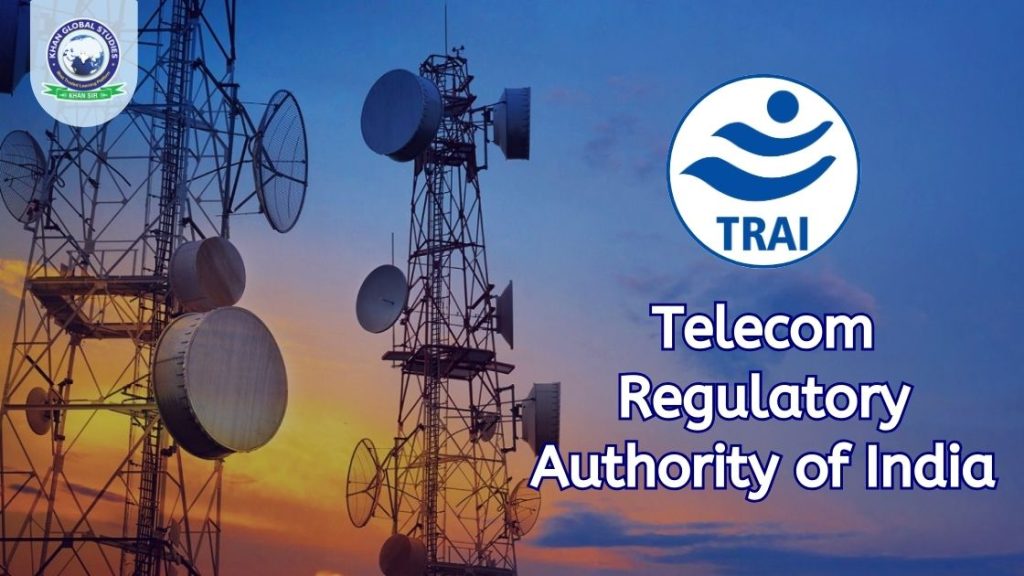The Telecom Regulatory Authority of India (TRAI) is a regulatory body set up by the Government of India under Section 3 of the Telecom Regulatory Authority of India Act, 1997. It is the regulator of the telecom sector in India. It consists of a Chairman not more than two whole-time members and not more than two part-time members. The TRAI Act was amended by an Ordinance, effective from January 24, 2000, which established a Telecom Disputes Settlement and Appellate Tribunal to take over the judicial and dispute functions of TRAI.
History of TRAI
The Telecom Regulatory Authority of India was established on 20 February 1997 by an Act of Parliament to regulate telecom services and tariffs in India. Earlier, regulation of telecom services and tariffs was looked after by the central government.
The mission of TRAI is to create and nurture the conditions for the growth of telecommunications in India so that the country can play a leading role in the emerging Global Information Society.
One of its main aims is to provide a fair and transparent environment that promotes a level playing field and facilitates fair competition in the market. TRAI regularly issues orders and directions on various subjects like tariffs, interconnection, quality of service, direct-to-home services and mobile number portability.
In January 2016, TRAI introduced a significant change in telecom for the benefit of consumers, where they will be compensated ₹1 (equivalent to ₹1.00 or 1.3¢ US in 2023) for each dropped call, provided a maximum of three calls are made. Be done. Finish up. End. To be dropped. one day. In May 2016, this regulation was struck down by the Supreme Court on the grounds of being “unfair, arbitrary and unconstitutional”.
Main Objectives of TRAI
- To create favourable conditions or circumstances to accelerate the development of telecommunications in India. This has been done to bring India to par with other leading countries in this particular field.
- Secondly, TRAI works to provide a fair and clear environment for companies in the market.
- Issuance of various regulatory instructions or mandates on subjects like tariffs, DTH, portability of mobile numbers etc.
The objectives of the apps and web portal were as follows:-
- The web portal was established to ensure that users in India can remain fully informed about the telecom services and service providers provided to them.
- The apps were launched to ensure the connection between the customer’s payment and the facilities provided to them for that particular service. This was mainly for the information of customers.
- Try Selector app allowed us to edit our channel list and help us manage it.
Functions of TRAI
Secretariat
Trai is administered through a secretariat headed by a Secretary. All resolutions are acted upon by the Secretary, who organizes the agenda for meetings of the Authority (consults the Chairman), prepares minutes of meetings and issues rules. The Secretary is assisted by advisers. These include mobile networks, interconnection and fixed networks, broadband and policy analysis, service quality, broadcasting and cable services, economic regulation, financial analysis and IFA, legal, consumer affairs and international relations, and administration and personnel. Officers are selected from the Indian Telecommunication Service and the Indian Administrative Service (IAS). The current Chairman of TRAI is PD Vaghela, a 1986 batch IAS officer of Gujarat cadre.
TRAI Mobile Apps
- On June 6, 2017, TRAI launched three new apps and a web portal to highlight telecom services offered to users.
- MyCall app, MySpeed app and Do Not Disturb (DND 2.0) to ensure there is transparency between what consumers are paying and what the telecom operator is promising to provide at a fixed rate.
- In December 2018, TRAI released another app named TRAI Channel Selector. Using this app, they can add, delete and manage their channels.
TRAI’s Recent Initiatives
TRAI has proposed WANI (Wi-Fi Access Network Interface) architecture to increase broadband penetration in India. If implemented, this could lead to the establishment of Public Data Offices (PDOs) where Wi-Fi internet would be available on demand. TRAI also links it to PCOs which were used to make voice calls and were very popular hotspots before mobile phones or home landlines became the ultimate means of communication.
Functions of TRAI (after amendment in 2000)
The main functions of TRAI after amendment in 2000 are:-
- Making recommendations on various issues
- General administrative and regulatory functions
- To decide and regulate the tariffs and costs of various services provided by telecommunication companies.
- Fulfil whatever orders the government of the country gives.
Conclusion
TRAI has always been the backbone of India’s telecom industry. It was a test that allowed and nurtured international telecom brands to venture into India and led India towards a more modern approach. Many international brands like Hutch, Vodafone etc. These companies entered India and explored the potential market, but the customers were looked after by TRAI. TRAI also played an important role in the Internet revolution in India a few years ago. We can say that modernization is definitely on its way and telecommunication is at the core of it along with certain factors.
FAQs
Question: What is the role of TRAI?
Answer: TRAI’s mission is to ensure that the interests of consumers are protected as well as to promote the conditions and pace for the development of telecommunication, broadcasting and cable services that will enable India to play a leading role in the emerging global information sector. Will make. Make Society.
Question: How do I file a complaint with TRAI?
Answer: Complaints, if any, received in TRAI are forwarded to the service providers. No follow-up action is taken by TRAI on individual complaint(s). For any clarification/feedback, consumers may contact the Senior Research Officer (Consumer Affairs) by email at daca@trai.gov.in.
Question: What is the full form of TRAI?
Answer: TRAI = Telecom Regulatory Authority of India.




